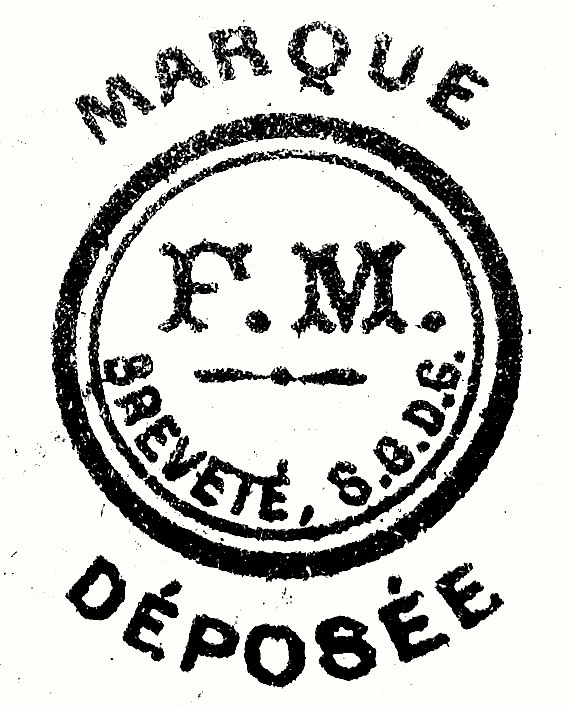I see them on the market every time, toys that are affiliated with Martin but are not Martins and/or his successors at all.
I already wrote 2 articles about this in 2019, but I think it is time to republish these 2 articles with some adjustments in 1 new article.
Martin himself also happily copied toys, but I will come back to that in a separate blog.
The names of the manufacturers are not always known because they were mostly small firms.
The last known imitations are fairly recent and from the Spanish Paya and are clearly recognizable.
Paya has made 10 imitations, luckily these are very recognizable as being. Example: the hairdresser, the drunkard, the judge, the conductor etc.

But older imitations are more difficult to recognize, are also on the market.

Middle line: photo 1 and 2 The Ma Portiere by Martin and also 4 photos of two imitations, pay attention to the face and the keys
Bottom line: photo 1 the La Bulgare by Martin in addition 2 photos of imitations, and the La violonist by Martin and also 2 imitations pay attention here to the shape of the keys, the had and the face.
And there are a lot more imitations
You can see it most clearly in the shape of the key. (see my older blog about the Martin keys : https://www.fernandmartintoys.nl/different-martin-keys/
But also the location of the key, with Martin the key is usually (not always) on the left side of the toy body, when you look at the toy with the face facing you, so on the right side.
So if there is a key on the other side or at the back then you have to be careful.
And of course the face is not what you can expect from a real Martin toy.


You see above some examples of imitations of the Le Violonist and the Le Pochard.
Look special to the face from these imitations and you can see exactly what I mean by that.
Sometimes these imitations have in the course of time received original parts from real Martins such as the bottle, a head, clothes or the box.
And then the question: What happened to the original production molds, were they destroyed or did they end up in the hands of companies that turned them into “Martins” again?
But there are also various “look a likes” from the fireman, from Günthermann, Gama, and others.

Gama has a very clear connection bar between the hands and a ladder on wheels.
The Günthermann can be recognized by:
-a short tube under his left elbow
-model of the key
-the plate on the ladder with imitation flames
-the shape of the freestanding support of the ladder.
And then there are the incomplete parts used to make a “NEW” toy under the name of Marin and Victor Bonnet.
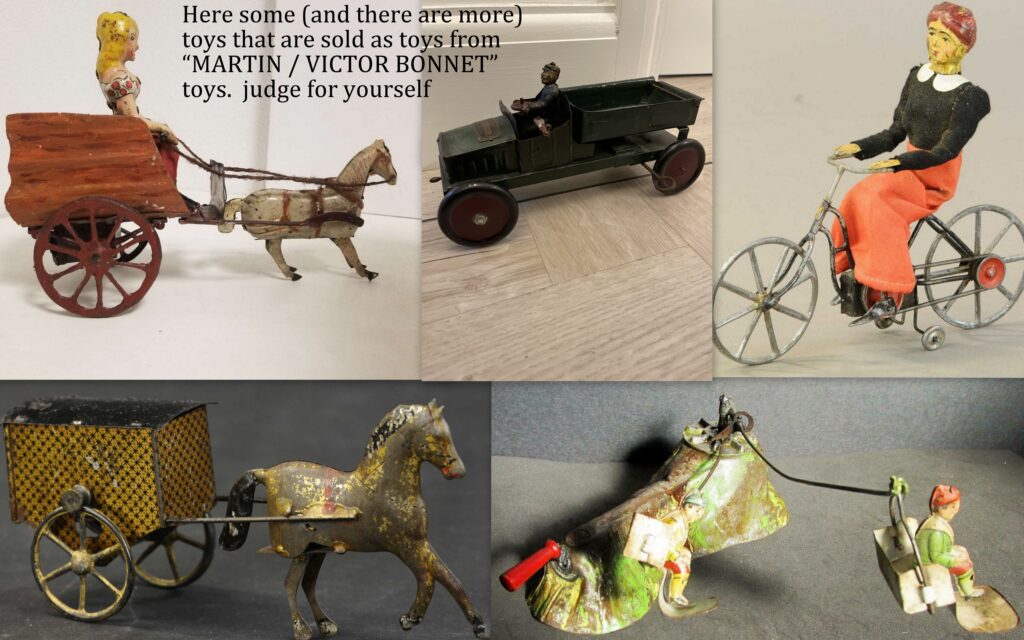
Exception:
There was a toy maker in Paris that made very nice “Martin” look and likes.
This manufacturer is named S.I.J.I.M. with director Prosper Levi.
He started this factory in 1909 but with the rise of the first world war he disappeared quickly in 1917.
S.I.J.I.M. means: Société Industrielle de jouets et d’inventions mécaniques.
He has not made many pieces but a few very beautiful.
The best seller and known is the organ grinder : le joueur d’orgue, this is often referred to as Martin.
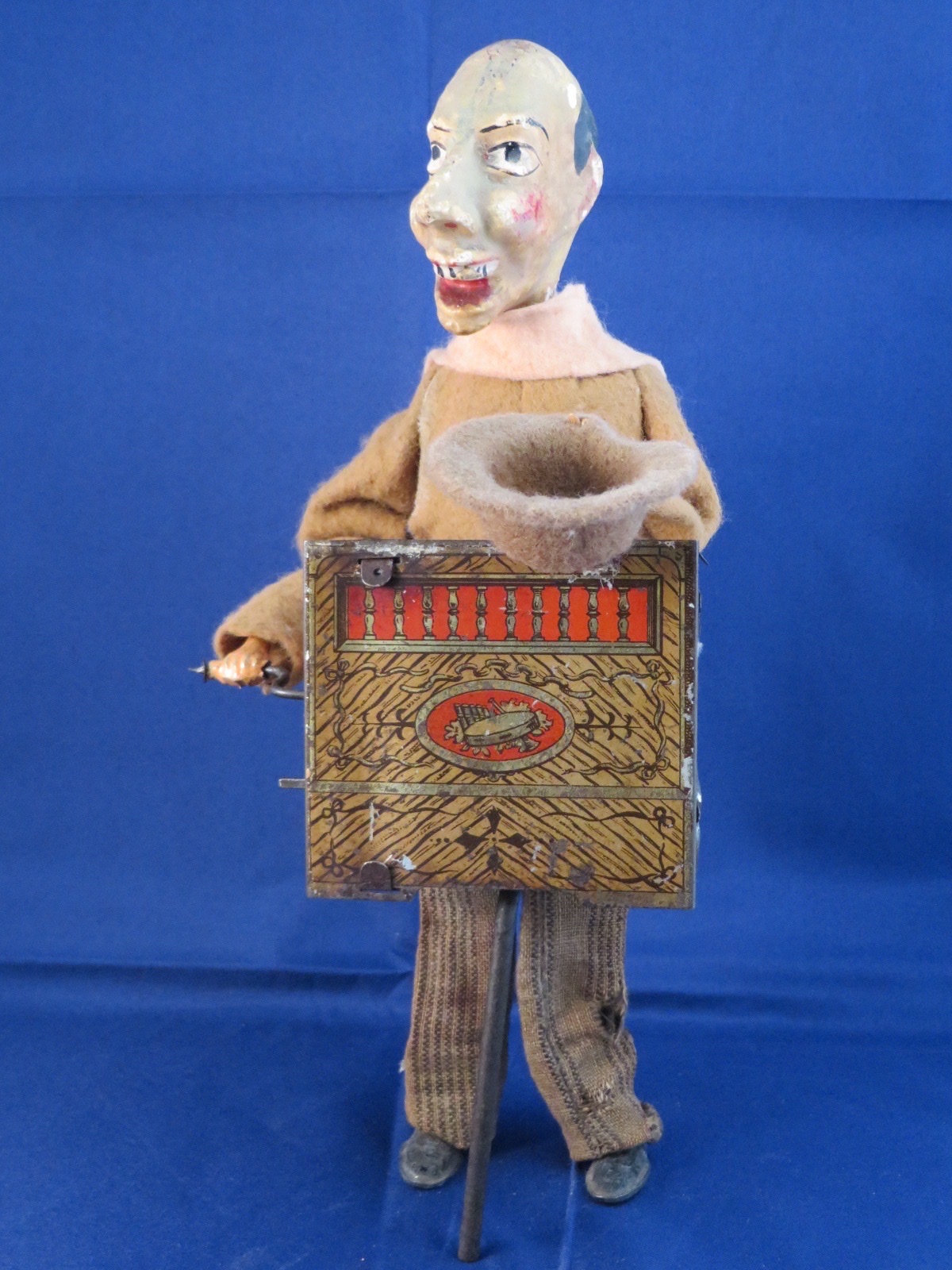
33 Le Joueur d’orgue. (The Organ Player)
But S.I.J.I.M. has also made less well-known pieces.

32 La Poussette. (The Stroller)
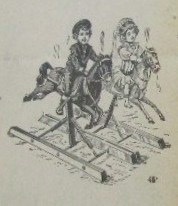
34 Les Chevaux Hygieniques
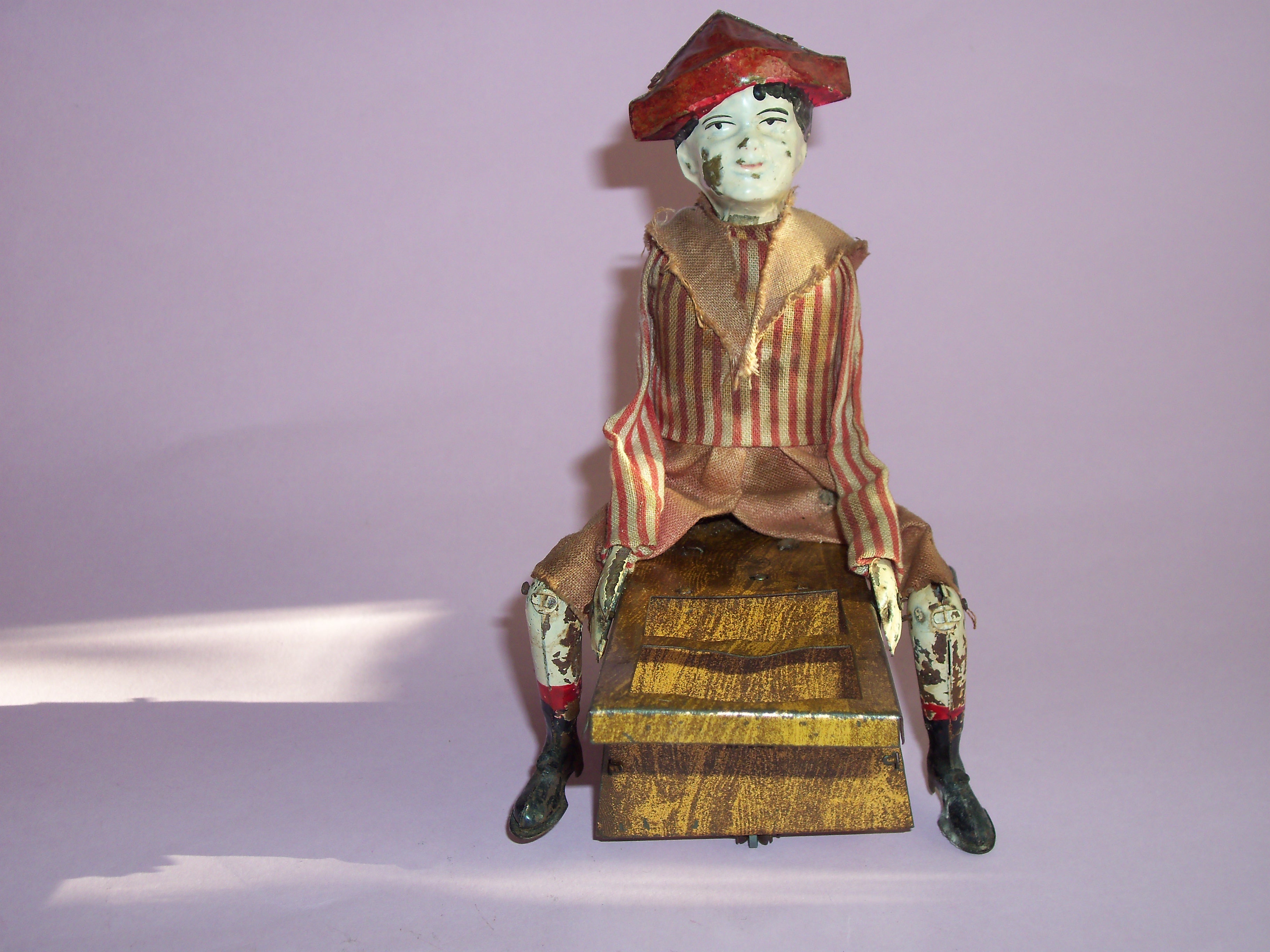
35 L’apprenti Cavalier. ( The Rider Apprentice)
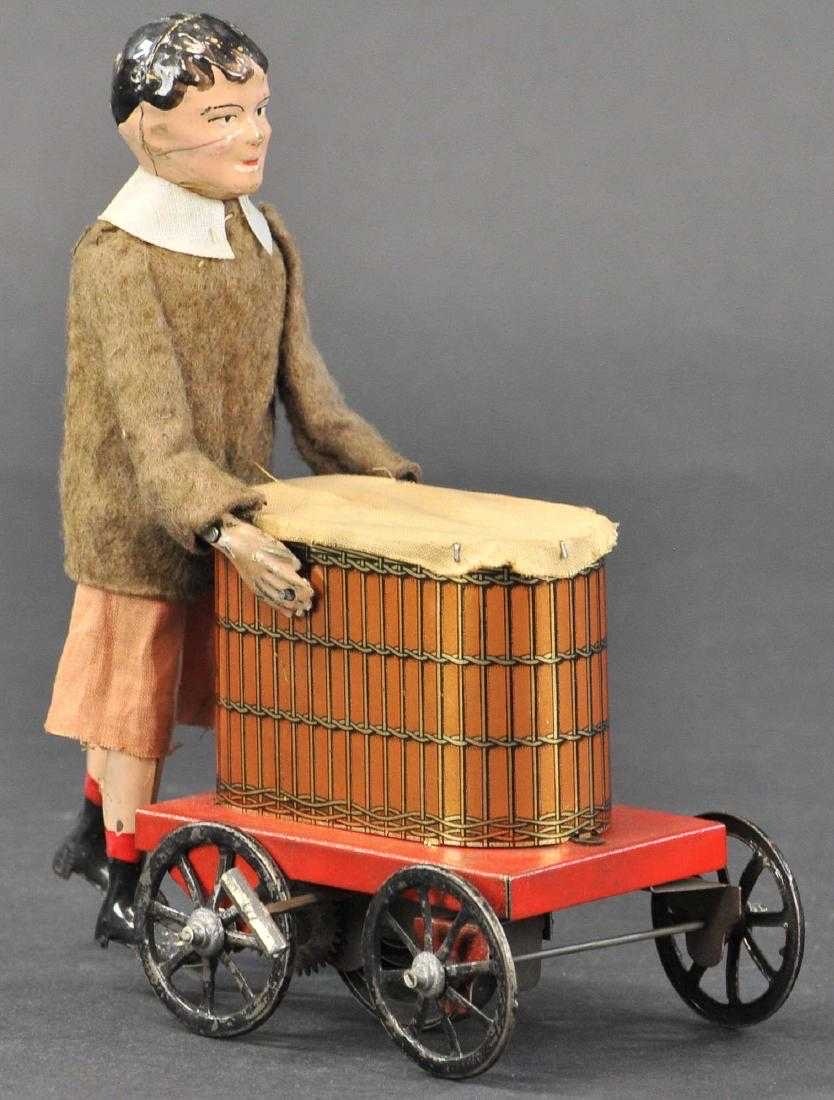
36 Le Livreur Rapide ( The Fast Delivery Man)


Two pages of the 1912 catalog from the department store: Choumara Paris with 6 Fernand Martin toys – 3 S.I.J.I.M. toys and other toys
The likely reason that they look so much like Martins is that the manufacturer, Prosper Levi, would have been a former employee of the Fernand Martin factory, but there is no 100% certainty about this fact that he was a former employee of Martin.
He made his own toys after the good example and style of Fernand Martin.
And not without success because these toys are very beautiful.
Even the key is a copy of a “Martin” key
So stay allert and pay attention.
An imitation doesn’t have to be ugly, if you like it, that’s fine, buy it and enjoy it.
Unless specifically stated all photos are from my own collection or courtesy of Michael Bertoia Auctions
